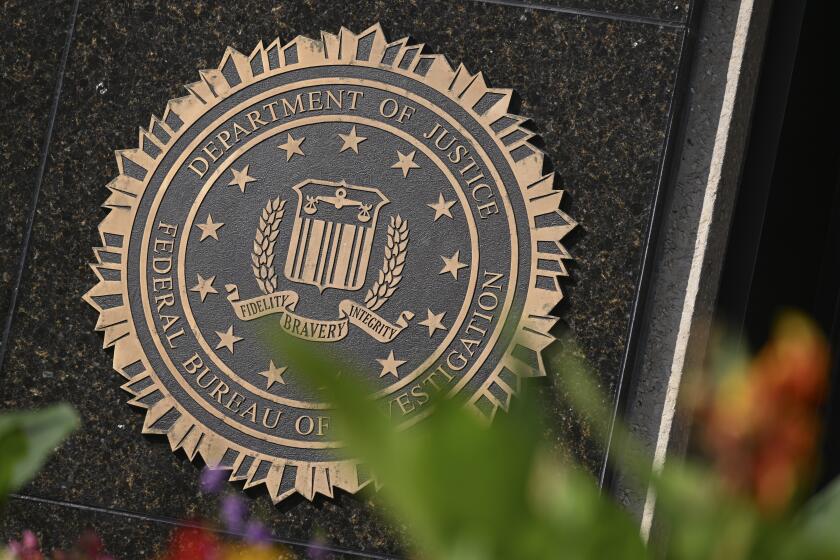Newsletter: White supremacy rears its violent head in New Zealand

Good morning. I’m Paul Thornton, and it is Saturday, March 16, 2019. Tomorrow’s L.A. Marathon will be the first in four years that I won’t be running, but if you’d like to spectate even without seeing me in the race (hard to imagine, I know), here’s a list of street closures along the 26.2-mile route. Let’s take a look back at the week in Opinion.
The alleged killer posted a rambling manifesto online. He slaughtered dozens of innocent people with combat-style weapons. He was upset by mass immigration and particularly hostile toward Muslims. All of this describes what happened in Norway in 2011 — and on Friday in Christchurch, New Zealand.
The killing of 49 worshipers at Friday prayers at two mosques felt like it could have been imported from another part of the world; in fact, one terrible irony is that an act of violence motivated by anti-immigrant hate appears to have been perpetrated by an Australian immigrant to New Zealand. The fact that white supremacy respects no national boundaries is the primary point taken up by the L.A. Times editorial board:
What we’re seeing in the New Zealand attacks is yet another atrocity committed in the name of white supremacy. Of course, such racism is not new in the world, as our own history attests. Hitler immolated most of Europe and North Africa in hopes of building an Aryan empire, and in the modern era, the U.S. suffers more terror attacks by home-grown white supremacists than from foreign actors. It is a scourge, and we pay it too little heed. Dylann Roof killed nine African Americans in a church to foment a race war. Robert Bowers killed 11 worshipers in a synagogue because “all these Jews need to die.” Gregory Bush killed two African Americans as they shopped but told a white shopper he spared that “whites don’t kill whites.” And on it goes while Trump falsely singles out Muslims and Central American immigrants as existential threats.
We would hope that outrage over such acts would be universal, but, once again, we hope for too much. The support for the killings on fever swamps like Gab.com show that even a racist murderer has an audience in a social media age in which anyone with a camera and a login can become a broadcaster. According to the purported manifesto, the point of the killings was to send a global message to Muslims "to directly reduce immigration rates to European lands by intimidating and physically removing the invaders themselves." The alleged gunman also sought to provoke partisans on both sides, "to create an atmosphere of fear and change in which drastic, powerful and revolutionary action can occur." Doing so requires a way to convey that message, and that's why the first 17 minutes of the attacks were streamed, live, on Facebook.
The shooter might have carried out his mayhem even if there were no giant social media networks available to broadcast it around the globe. But there are, and while Facebook quickly removed the video and terminated the alleged killer's account, the video spread rapidly on YouTube and Twitter despite those companies’ efforts to keep it off their networks. That's a problem inherent in a platform that makes content posted by users available for sharing, instantaneously and without filters, around this modern media world. The manifesto, meanwhile, remains available on multiple sites.
Gov. Gavin Newsom’s death penalty moratorium is symbolic, but still important. California hasn’t executed anyone since 2006, and there’s no sign the legal challenges over the state’s plans for its 737 condemned prisoners will end soon. Still, Newsom’s moratorium throws one more wrench into the gears of the “machinery of death,” making it less likely ever to restart (even though voters recently said they wanted to speed it up, as readers have pointed out). Still, says the L.A. Times editorial board, we need to permanently rid ourselves of the death penalty. L.A. Times
California has the most of just about anything, it being the most populous state, but it’s still jarring to read a headline like this: “A Pause on the Nation’s Biggest Death Row.” That’s us with the “biggest death row” — not Texas, not Florida, but California. The New York Times’ editorial board hopes Newsom’s death penalty moratorium signals the demise of a barbaric practice. New York Times
USC’s at the center of the admissions cheating scandal — no surprise there, says the L.A. Times editorial board: “This is, after all, the university rocked in recent years by a series of revelations about scandals and cover-ups, including a medical school dean who partied with criminals and did illegal drugs, a campus gynecologist accused by students of decades of improprieties and a former assistant basketball coach who pleaded guilty to accepting bribes from a sports management firm.” L.A. Times
College admissions were already a mess before the bribery scandal: “This is simply the extreme and egregious (and, prosecutors say, illegal) edge of a college admissions process that is already heavily weighted with subtle and unsubtle forms of favoritism for the rich, empowered and connected,” says the editorial board. Stanford neuroscientist Robert M. Sapolsky lists all the biological ways wealth and privilege give children an advantage in admissions. Novelist Marie Myung-Ok Lee says the bribery scandal has made her appreciate her tiger parents more.
Why was the FAA so late to deplane the Boeing 737 Max? The Federal Aviation Administration was expressing confidence in the plane’s safety after two fatal crashes of the same type within five months, even though many other countries acted out of an abundance of caution and grounded the troubled jet. Then on Wednesday, after 51 other nations ordered the 737 Max out of their skies, the FAA grounded the plane too. Congress needs to investigate what exactly made the agency change its mind. L.A. Times
Reach me: paul.thornton@latimes.com
Sign up for Essential California
The most important California stories and recommendations in your inbox every morning.
You may occasionally receive promotional content from the Los Angeles Times.








